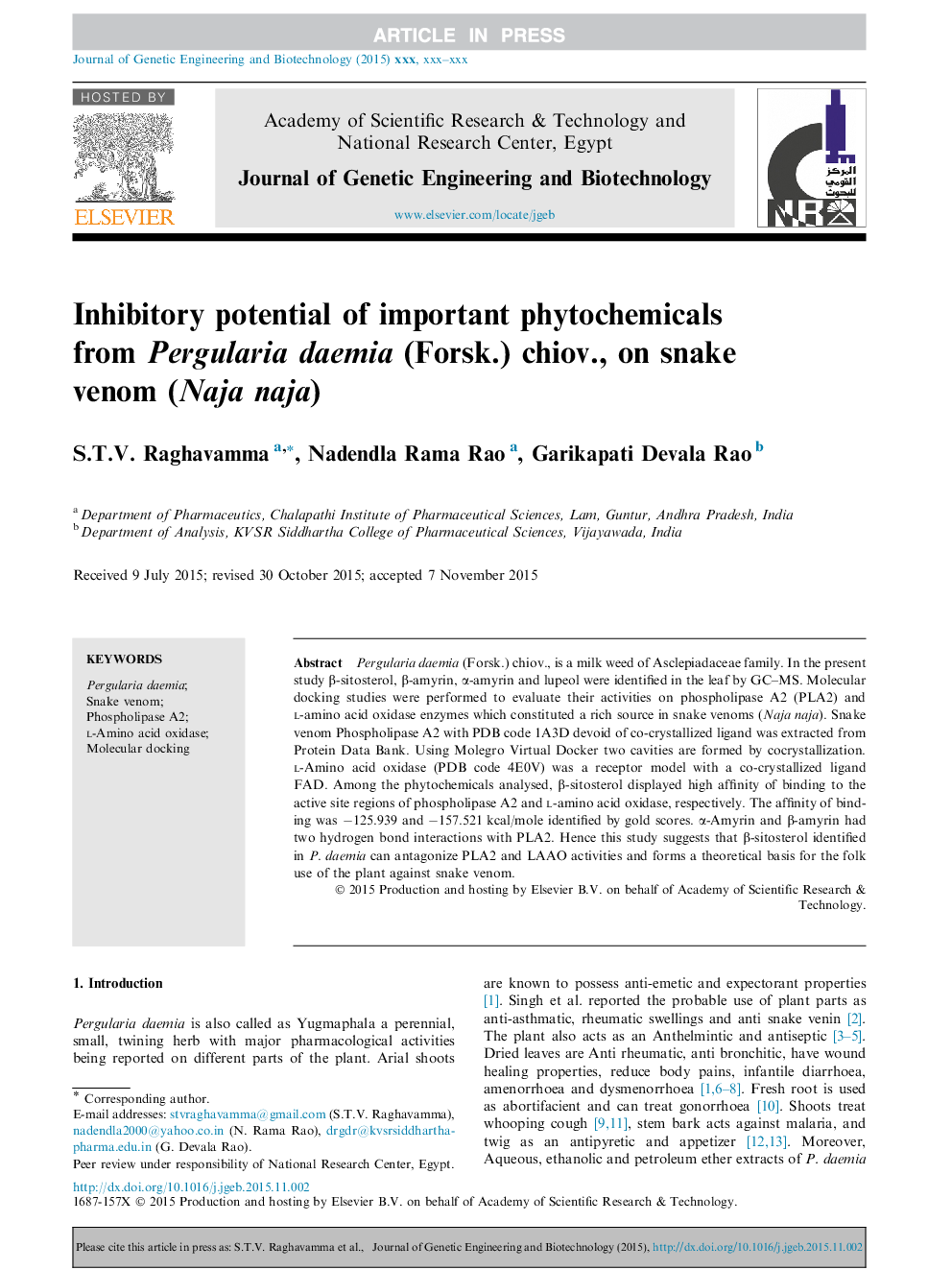| Article ID | Journal | Published Year | Pages | File Type |
|---|---|---|---|---|
| 8416659 | Journal of Genetic Engineering and Biotechnology | 2016 | 7 Pages |
Abstract
Pergularia daemia (Forsk.) chiov., is a milk weed of Asclepiadaceae family. In the present study β-sitosterol, β-amyrin, α-amyrin and lupeol were identified in the leaf by GC-MS. Molecular docking studies were performed to evaluate their activities on phospholipase A2 (PLA2) and l-amino acid oxidase enzymes which constituted a rich source in snake venoms (Naja naja). Snake venom Phospholipase A2 with PDB code 1A3D devoid of co-crystallized ligand was extracted from Protein Data Bank. Using Molegro Virtual Docker two cavities are formed by cocrystallization. l-Amino acid oxidase (PDB code 4E0V) was a receptor model with a co-crystallized ligand FAD. Among the phytochemicals analysed, β-sitosterol displayed high affinity of binding to the active site regions of phospholipase A2 and l-amino acid oxidase, respectively. The affinity of binding was â125.939 and â157.521 kcal/mole identified by gold scores. α-Amyrin and β-amyrin had two hydrogen bond interactions with PLA2. Hence this study suggests that β-sitosterol identified in P. daemia can antagonize PLA2 and LAAO activities and forms a theoretical basis for the folk use of the plant against snake venom.
Related Topics
Life Sciences
Biochemistry, Genetics and Molecular Biology
Biotechnology
Authors
S.T.V. Raghavamma, Nadendla Rama Rao, Garikapati Devala Rao,
